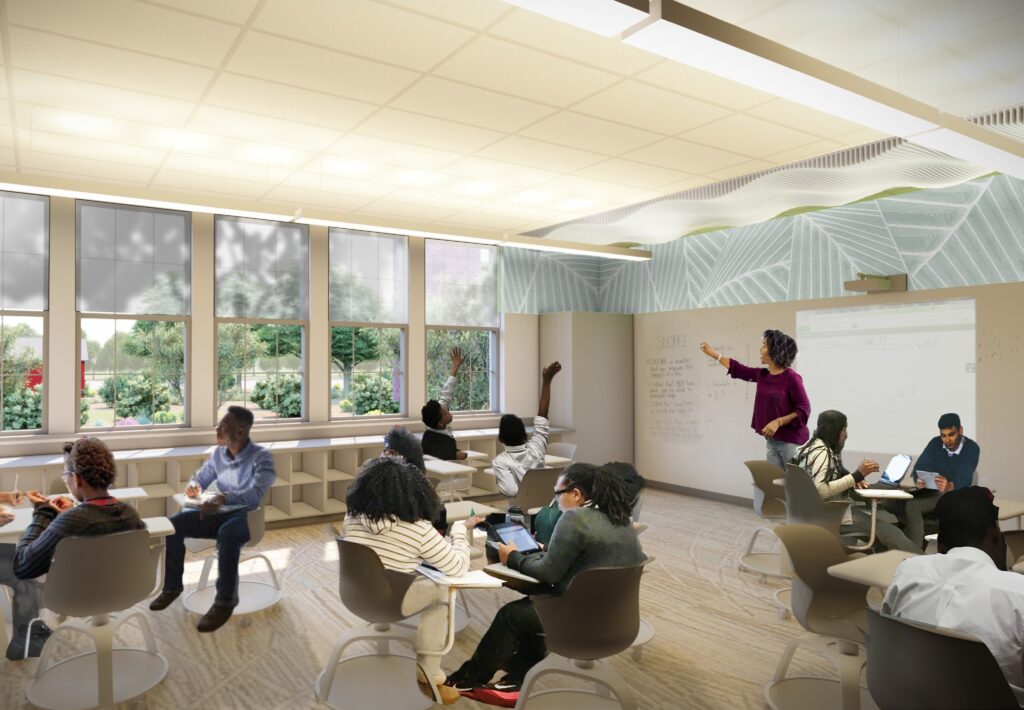This study is a collaboration of Craig Gaulden Davis, Morgan State University. The Salk Institute for Biological Studies, and Terrapin Bright Green. The purpose of this study was to examine to what extent the design of the physical learning space, enhanced with biophilic design, contributes to student stress reduction and improved learning outcomes for a middle school Math class at a public charter school in West Baltimore.
Findings of data collected from a biophilic classroom and a control classroom where the physical design of each space varies are presented. One is a traditional classroom while the biophilic classroom is enriched with views to nature, dynamic and diffuse daylight and biomorphic patterns. Data was collected by monitoring students’ HRV (heart rate variation) as a measure of stress, comparing academic performance, student surveys, and student and instructor interviews.
This virtual (YouTube) presentation, addresses what stakeholders need to about how spatial affordances influence how learning is experienced by all students.
I. Recordings – YouTube
A. The Impact of Biophilic Learning Spaces on Student Success
– James H. Determan, FAIA, Principal – Craig Gaulden Davis
– Thomas D. Albright, Ph.D., Professor and Conrad T. Prebys Chair – The Salk Institute for Biological Studies
B. LSC Open Conversation #1: The Impact of Biophilic Spaces on Student Success – July 7, 2021
– James H. Determan, FAIA, Principal – Craig Gaulden Davis and Thomas D. Albright, Ph.D., Professor and Conrad T. Prebys Chair – The Salk Institute for Biological Studies
– Moderators: Marie Sorensen —Sorensen Partners | Architects + Planners, Inc. and Carol Stolt —FGM Architects
II. Resources
A. From the LSC Archives
- Experience of the User Learner – From the LSC Roundtable at Georgia Institute of Technology, 2016
B. From the Field
- The Impact of Biophilic Learning Spaces on Student Success
- 14 Patterns of Biophilic Design: Improving Health & Well-Being in the Built Environment – Terrapin Bright Green
III. Evidence: Findings from Research and the Field

